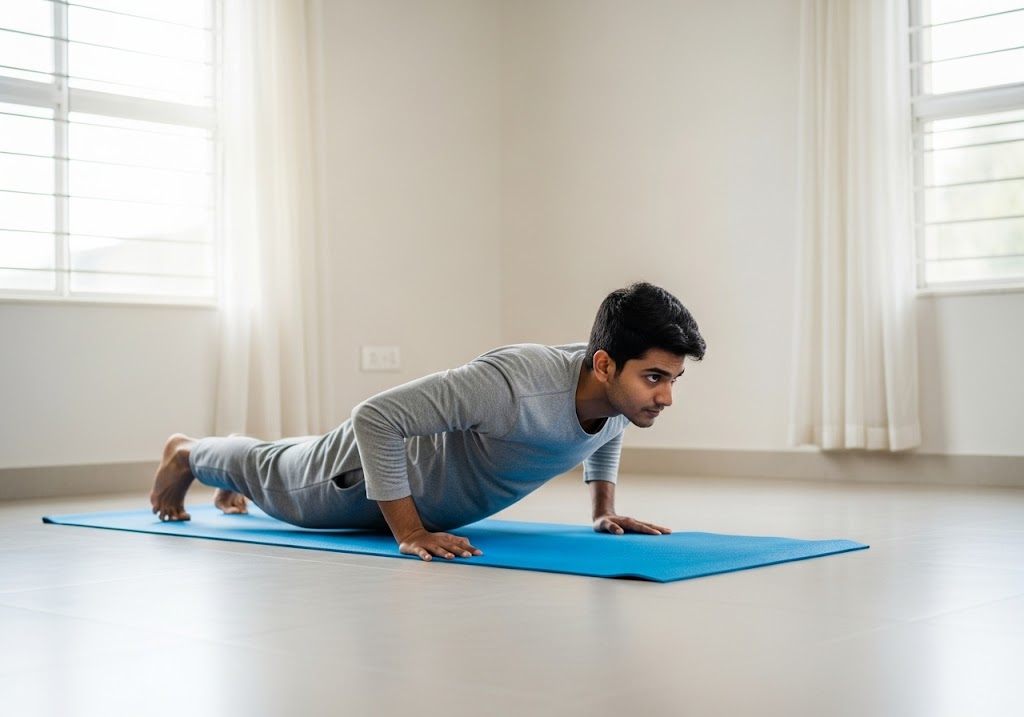The 8 warm up exercises for beginners for calisthenics are: neck rolls for the neck and spine, shoulder circles for shoulders and upper back, arm swings for shoulders and arms, torso twists for core and spine, hip circles for hips and pelvis, leg swings for hips and legs, ankle rotations for ankles and feet, and marching in place for full-body activation.
Understanding warm up exercises for beginners is crucial for safe and effective calisthenics training. These essential preparation movements prepare your body for intense physical activity while preventing injuries and improving performance. Learning proper warm up exercises for beginners sets the foundation for successful bodyweight training and long-term fitness success. Whether you’re starting your fitness journey or returning after a break, mastering warm up exercises for beginners ensures you train safely and effectively. This comprehensive guide will teach you everything needed to perform warm up exercises for beginners correctly, helping you build confidence and achieve better results in your calisthenics practice.
Table of Contents
8 Full Body Warm Up Exercises for Beginners
Understanding full body warm up exercises for beginners ensures comprehensive preparation for calisthenics training. These movements target all major muscle groups and joints, creating total-body readiness for safe and effective exercise performance.
| Exercise | Target Area | Duration | Repetitions |
| Neck Rolls | Neck and upper spine | 30 seconds | 5 each direction |
| Shoulder Circles | Shoulders and upper back | 30 seconds | 10 each direction |
| Arm Swings | Shoulders and arms | 30 seconds | 10 each direction |
| Torso Twists | Core and spine | 30 seconds | 10 each direction |
| Hip Circles | Hips and pelvis | 30 seconds | 10 each direction |
| Leg Swings | Hips and legs | 30 seconds | 10 each direction |
| Ankle Rotations | Ankles and feet | 30 seconds | 10 each direction |
| Marching in Place | Full body activation | 1 minute | 30 steps |
1. Neck Rolls
Gently drop your chin to chest, then slowly roll your head in a complete circle, moving through ear-to-shoulder positions. Keep movements smooth and controlled. Avoid forcing the motion or rolling backward aggressively. This releases tension in cervical vertebrae and prepares neck muscles for activity. Complete five full rotations in each direction.
2. Shoulder Circles
Stand with feet hip-width apart, arms relaxed at sides. Lift shoulders up toward ears, roll them back, down, and forward in smooth circular motions. Focus on full range of movement to activate shoulder joints and upper back muscles. This exercise improves shoulder mobility and reduces stiffness. Complete ten circles in each direction.
3. Arm Swings
Stand tall with arms extended horizontally at shoulder height. Swing both arms across your body, then open them wide, squeezing shoulder blades together. Keep core engaged and maintain upright posture throughout the movement. This dynamic stretch activates chest, shoulders, and upper back muscles while improving shoulder flexibility and circulation.
4. Torso Twists
Plant feet firmly hip-width apart, hands on hips or crossed over chest. Rotate your torso left and right, keeping hips facing forward. Move through full range of motion while maintaining neutral spine. This exercise activates core muscles, improves spinal mobility, and prepares the midsection for rotational movements during your workout.
5. Hip Circles
Stand with hands on hips, feet shoulder-width apart. Make large circles with your hips, moving clockwise then counterclockwise. Keep upper body stable and focus on smooth, controlled movements. This exercise increases hip joint mobility, activates glutes and hip flexors, and prepares the pelvis for lower body exercises.
6. Leg Swings
Hold onto a wall or sturdy object for balance. Swing one leg forward and backward in a pendulum motion, keeping it straight. Switch legs after completing repetitions. This dynamic movement increases hip flexibility, activates hip flexors and hamstrings, and improves lower body circulation. Maintain controlled, rhythmic swinging motion throughout.
7. Ankle Rotations
Lift one foot slightly off the ground, supporting your weight on the other leg. Rotate your elevated foot in clockwise and counterclockwise circles, moving through full range of motion. This exercise improves ankle mobility, activates calf muscles, and prepares feet for weight-bearing activities. Switch feet after completing both directions.
8. Marching in Place
Stand tall and lift knees alternately to hip height while swinging opposite arms naturally. Maintain steady rhythm and upright posture throughout. This full-body activation exercise increases heart rate, improves coordination, and prepares your entire body for more intense activity. Keep movements controlled and purposeful for maximum benefit.
Find out how many jumping jacks to burn 500 calories and how to do them right.

Warm Up Exercises for Beginners Step by Step?
Learning warm up exercises for beginners requires a systematic approach that gradually prepares your body for physical activity. This step-by-step method ensures proper muscle activation, joint mobility, and injury prevention. Follow these proven steps to master warm up exercises for beginners safely and effectively.
| Step | Focus Area | Duration | Intensity |
| 1 | Joint Mobility | 2-3 minutes | Light |
| 2 | Dynamic Stretching | 3-4 minutes | Light to Moderate |
| 3 | Muscle Activation | 2-3 minutes | Moderate |
| 4 | Movement Preparation | 2-3 minutes | Moderate |
| 5 | Heart Rate Elevation | 1-2 minutes | Moderate |
| 6 | Specific Preparation | 2-3 minutes | Moderate to High |
| 7 | Final Readiness Check | 1 minute | Light |
| 8 | Transition to Workout | 30 seconds | Variable |
Step 1: Joint Mobility Begin your warm up exercises for beginners by focusing on joint mobility through gentle circles and rotations. Move your neck, shoulders, arms, hips, and ankles in slow, controlled motions. This initial phase of warm up exercises for beginners improves synovial fluid production and prepares joints for movement.
Step 2: Dynamic Stretching Progress to dynamic stretching movements that take your joints through their full range of motion. Include leg swings, arm circles, and torso rotations in your warm up exercises for beginners routine. Dynamic stretching is essential for preparing muscles and connective tissues for physical activity.
Step 3: Muscle Activation Activate major muscle groups through gentle contractions and holds. Focus on engaging your core, glutes, and stabilizing muscles during this phase of warm up exercises for beginners. Proper muscle activation ensures your body is ready for more demanding movements and exercises.
Step 4: Movement Preparation Practice movement patterns similar to your main workout through simplified versions. This phase of warm up exercises for beginners bridges the gap between preparation and actual training. Movement preparation improves coordination and reinforces proper form before intense exercise.
Step 5: Heart Rate Elevation Gradually increase your heart rate through light cardio movements like marching in place or gentle jumping jacks. This cardiovascular component of warm up exercises for beginners improves blood flow and oxygen delivery to working muscles throughout your body.
Step 6: Specific Preparation Perform movements that specifically prepare you for your planned workout. This targeted phase of warm up exercises for beginners should mimic the exercises you’ll perform during your main training session. Specific preparation optimizes performance and reduces injury risk.
Step 7: Final Readiness Check Assess your body’s readiness for exercise by checking for any remaining stiffness or discomfort. This evaluation phase of warm up exercises for beginners ensures you’re properly prepared for training. Address any issues before progressing to your main workout.
Step 8: Transition to Workout Smoothly transition from warm up exercises for beginners to your main training session. This final step ensures you maintain the benefits of your preparation while beginning your workout at the optimal intensity level for safe and effective training.
Explore the key differences in calisthenics vs gymnastics and choose what fits your goals.
What are Warm Up Exercises for Beginners?
Warm up exercises for beginners are gentle, preparatory movements designed to ready your body for physical activity. These essential exercises gradually increase heart rate, improve blood flow, and prepare muscles and joints for more intense movement. Understanding warm up exercises for beginners is fundamental for anyone starting their fitness journey or learning how to start calisthenics safely and effectively.
The purpose of warm up exercises for beginners extends beyond simple preparation – they serve as a bridge between rest and activity. These movements help prevent injury, improve performance, and create mental readiness for exercise. When performed correctly, warm up exercises for beginners establish proper movement patterns and body awareness that benefit your entire workout session and long-term fitness development.
These arm workouts with dumbbells for women are perfect for sculpted, confident arms.
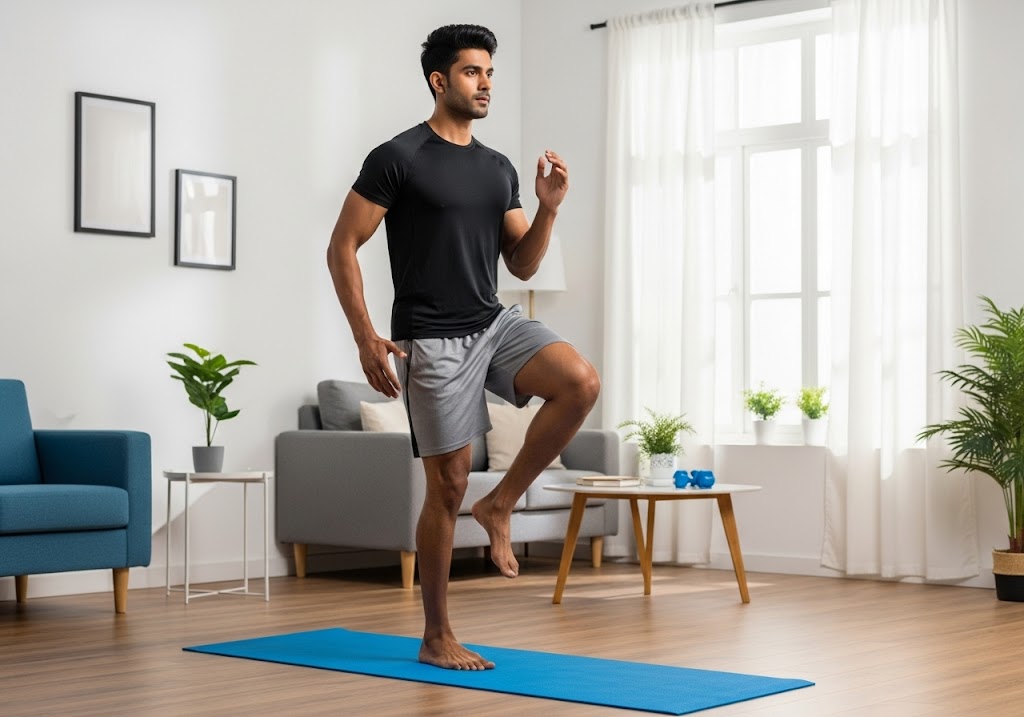
Benefits of Warm Up Exercises for Beginners
Performing warm up exercises for beginners provides numerous physical and mental benefits that enhance your overall training experience. These preparatory movements are essential for safe, effective exercise and should never be skipped, especially when learning new movements or skills.
- Injury Prevention: Reduces risk of muscle strains, joint injuries, and other exercise-related problems
- Improved Performance: Enhances strength, flexibility, and coordination during your main workout
- Better Blood Flow: Increases circulation and oxygen delivery to working muscles
- Mental Preparation: Creates focus and readiness for challenging physical activity
- Joint Lubrication: Improves synovial fluid production for smoother joint movement
- Muscle Activation: Prepares specific muscle groups for optimal function during exercise
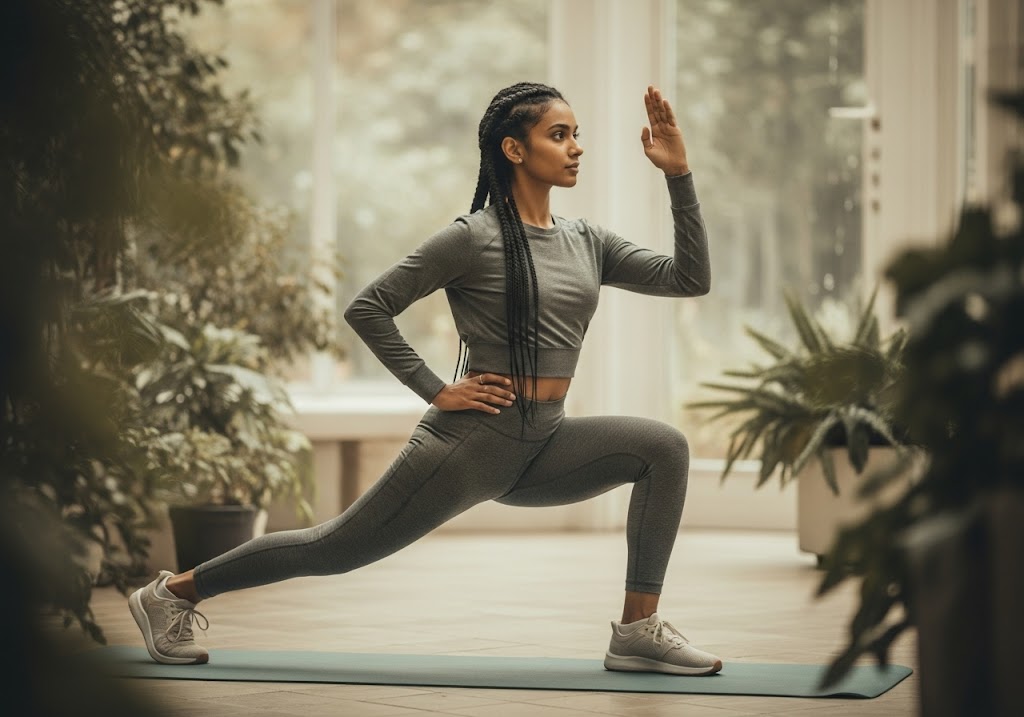
Upper Body Warm Up Exercises for Beginners
Upper body preparation is crucial for calisthenics movements like push-ups, pull-ups, and handstands. These warm up exercises for beginners specifically target the shoulders, arms, and upper back to prevent injury and improve performance.
| Exercise | Primary Focus | Technique | Benefits |
| Shoulder Shrugs | Shoulder mobility | Lift shoulders to ears, hold 2 seconds | Releases tension, improves range |
| Arm Circles | Shoulder joints | Small to large circles, both directions | Lubricates joints, increases mobility |
| Cross-body Stretches | Shoulder flexibility | Pull arm across chest, hold 15 seconds | Stretches posterior deltoids |
| Wall Angels | Shoulder stability | Back against wall, move arms up/down | Improves posture, activates muscles |
| Doorway Stretches | Chest flexibility | Stand in doorway, lean forward | Opens chest, prepares for exercises |
| Wrist Rotations | Wrist mobility | Gentle circles, both directions | Prepares for weight-bearing exercises |
Discover the best workout to lose weight and gain muscle and start seeing results.
Lower Body Warm Up Exercises for Beginners
Lower body preparation is essential for squats, lunges, and jumping movements in calisthenics. These warm up exercises for beginners target the hips, legs, and ankles to ensure proper mobility and activation for safe training.
| Exercise | Primary Focus | Technique | Benefits |
| Hip Circles | Hip mobility | Hands on hips, circle pelvis | Increases hip range of motion |
| Leg Swings | Hip flexors/extensors | Hold wall, swing leg front/back | Improves hip flexibility |
| Side Leg Swings | Hip abductors | Hold wall, swing leg side to side | Opens hip joints laterally |
| Heel Walks | Calf stretching | Walk on heels, toes pointed up | Stretches calves, improves ankle mobility |
| Toe Walks | Calf activation | Walk on toes, engage calf muscles | Strengthens calves, improves balance |
| Gentle Bouncing | Ankle mobility | Light bouncing on balls of feet | Prepares ankles for jumping movements |

Core Warm Up Exercises for Beginners
Core preparation is vital for maintaining proper form and preventing back injury during calisthenics training. These warm up exercises for beginners activate deep stabilizing muscles and prepare your midsection for challenging movements.
| Exercise | Primary Focus | Technique | Benefits |
| Pelvic Tilts | Lower back mobility | Lying down, tilt pelvis forward/back | Improves spinal flexibility |
| Gentle Twists | Spine rotation | Seated, rotate torso left/right | Prepares spine for rotational movements |
| Deep Breathing | Core activation | Slow, controlled breathing | Activates deep core muscles |
| Cat-Cow Stretches | Spine mobility | On hands/knees, arch/round back | Improves spinal flexibility |
| Dead Bug | Core stability | Lying down, opposite arm/leg moves | Teaches core control |
| Bird Dog | Core integration | Hands/knees, extend opposite limbs | Integrates core with movement |
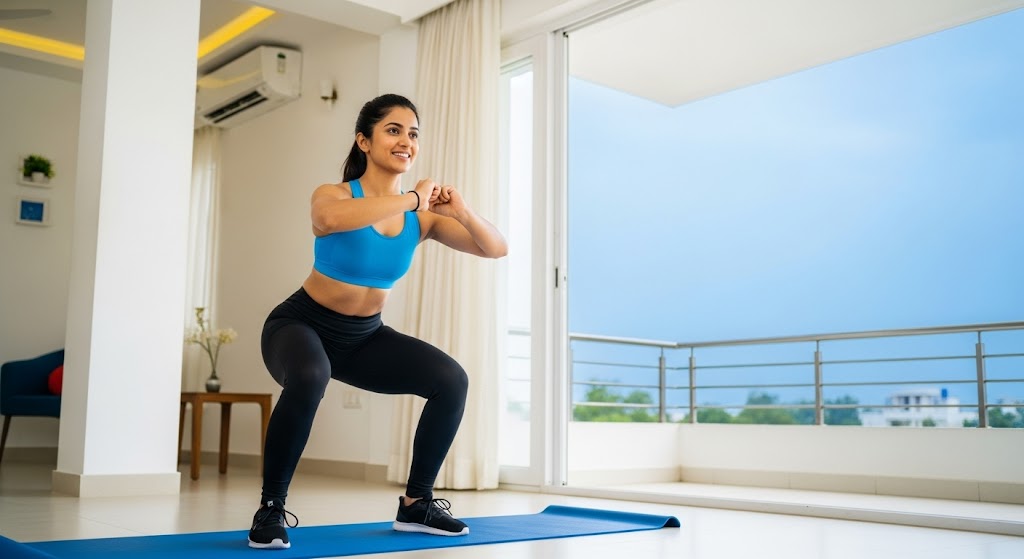
Common Mistakes in Warm Up Exercises for Beginners
Understanding common errors in warm up exercises for beginners helps you avoid pitfalls that can reduce effectiveness or increase injury risk. These mistakes are particularly common when people rush through preparation or don’t understand proper techniques.
- Rushing Through Movements: Moving too quickly prevents proper muscle activation and joint preparation
- Skipping Warm Up Entirely: Jumping straight into exercise increases injury risk significantly
- Static Stretching First: Holding stretches without movement can reduce performance
- Inadequate Duration: Spending less than 5-10 minutes on warm up exercises for beginners
- Ignoring Specific Preparation: Not preparing for your planned workout movements
- Incorrect Form: Poor technique reduces effectiveness and may cause injury
- Focusing Only on Problem Areas: Neglecting full-body preparation for comprehensive readiness
- Inconsistent Routine: Changing warm up exercises for beginners without understanding progression
Learn how to get a wider back with bodyweight exercises and smart training techniques that actually work.
Creating Your Warm Up Routine
Developing a consistent routine for warm up exercises for beginners ensures you prepare properly for every workout session. A well-structured routine becomes automatic and provides reliable preparation for safe, effective training.
- Duration Planning: Allocate 5-10 minutes for comprehensive warm up exercises for beginners
- Exercise Selection: Choose 6-8 movements that target all major muscle groups
- Progression Order: Start with gentle movements and gradually increase intensity
- Specific Preparation: Include movements similar to your planned workout
- Consistency: Use the same routine initially, then adapt as you advance
- Personal Adaptation: Modify exercises based on your body’s needs and limitations
Try this intense calisthenics push workout to target your chest, shoulders, and triceps using bodyweight only.
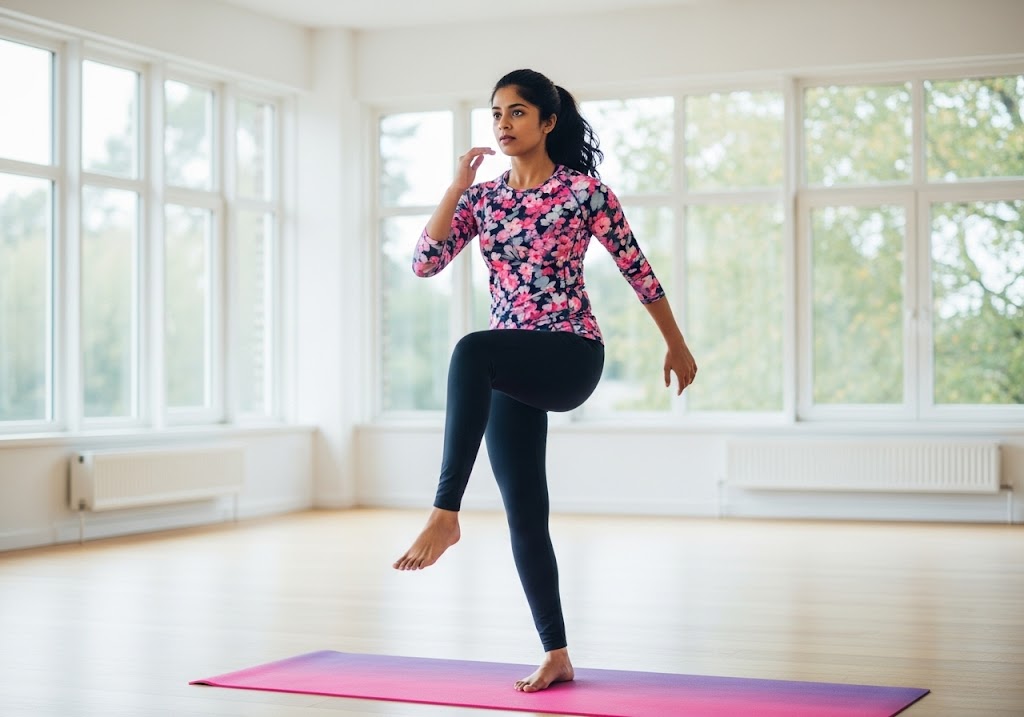
Advanced Warm Up Considerations
As you progress in your calisthenics journey, your warm up exercises for beginners routine should evolve to meet increasing training demands. Advanced practitioners often incorporate sport-specific movements and longer preparation periods.
Understanding the connection between warm up exercises for beginners and advanced skills like calisthenics planche helps you prepare appropriately for challenging movements. Proper preparation becomes even more critical as exercise difficulty increases.
Many people wonder does calisthenics build muscle effectively. The answer is yes, and proper warm up exercises for beginners ensure you maximize muscle building potential while minimizing injury risk throughout your training.
Integrating Warm Up with Training
Effective warm up exercises for beginners should integrate seamlessly with your main training session. This integration ensures you maintain the benefits of preparation while transitioning smoothly to your workout.
Consider how warm up exercises for beginners complement different training styles, whether you’re focusing on back calisthenics exercises or following calisthenics at home no equipment routines.
The principles of warm up exercises for beginners apply whether you’re training at home or in a gym. Proper preparation is essential regardless of your training environment or equipment availability.
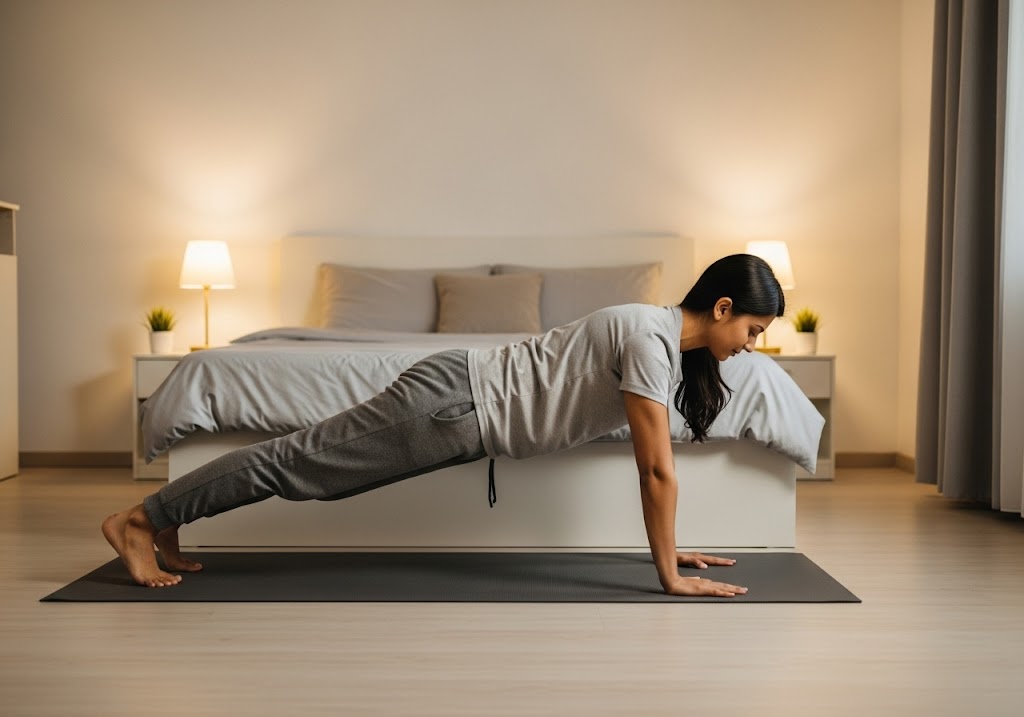
Seasonal and Environmental Considerations
Your warm up exercises for beginners routine may need adjustment based on environmental factors like temperature and humidity. Cold weather requires longer warm up periods, while hot conditions may need modified intensity levels.
Understanding how different environments affect your warm up exercises for beginners helps you maintain consistency and effectiveness throughout the year. This adaptability ensures you’re always properly prepared for training.
The flexibility of calisthenics vs gymnastics training allows for easy adaptation of warm up exercises for beginners to various settings and conditions.
Long-term Warm Up Development
As you advance in your fitness journey, your warm up exercises for beginners routine should evolve to match your growing capabilities and training intensity. This progression ensures continued effectiveness and injury prevention.
Consider incorporating elements from calisthenics pull workout preparation as you develop pulling strength and skill. Progressive warm up development supports long-term training success.
Tips for Warm-Up Exercise Beginners
Starting your fitness journey requires proper preparation to prevent injury and maximize performance. Warm-up exercises are essential for beginners as they prepare your body for physical activity by increasing blood flow, improving flexibility, and mentally preparing you for your workout routine.
- Dedicate 5-10 minutes to your warm-up routine before beginning any main workout session.
- Begin gently and progressively build the intensity of your movements to avoid shocking your system.
- Prioritize activating the muscle groups you’ll be targeting during your primary exercise routine.
- Customize your preparation routine based on your planned activity. For running, emphasize leg movements and mobility drills; for upper body workouts, focus on arm circles and shoulder rolls.
- An effective warm-up should elevate your heart rate and core body temperature, potentially causing light perspiration without leaving you exhausted.
- Pay attention to your body’s signals and avoid pushing through any discomfort or sharp pain during preparation.
- Stay properly hydrated before, during, and after your warm-up to maintain optimal performance and prevent cramping.
- Include joint mobility exercises such as neck rolls, hip circles, and ankle rotations to improve range of motion.
- Incorporate light cardio movements like marching in place, gentle jumping jacks, or arm swings to get your blood pumping.
- Maintain consistent breathing patterns throughout your warm-up to ensure adequate oxygen flow to your muscles.
- Make warm-ups a non-negotiable habit regardless of how pressed for time you feel, as consistency prevents injury.
- Consider your environment and adjust your warm-up intensity based on outdoor temperature and humidity levels.
Important Note: Dynamic stretching (movement-based stretching) works best for warm-ups, while static stretching (holding positions) should be reserved for your post-workout cool-down when muscles are already heated.
Conclusion
Learning proper warm up exercises for beginners is essential for safe, effective calisthenics training. These preparatory movements prevent injury, improve performance, and create optimal conditions for skill development. With consistent practice and proper technique, warm up exercises for beginners become an automatic part of your training routine. Remember that preparation is just as important as the workout itself. Start implementing these warm up exercises for beginners today and experience the difference proper preparation makes in your fitness journey.
Want to master the calisthenics handstand and take your skills to the next level? Whether you’re a beginner or pushing advanced skills, ISC – Indian School of Calisthenics offers expert guidance to help you master bodyweight training. Visit us at SRPF Ground, NH8, Goregaon (E), Mumbai – 400065. For class schedules, personalized coaching, or more details, call +91 77159 53218. Train smart, move better, and unlock your back strength with ISC.
Warm Up Exercises for Beginners – FAQs
How long should beginners spend on warm up exercises?
Beginners should dedicate 5-10 minutes to warm up exercises. This duration allows proper muscle activation, joint mobility, and cardiovascular preparation for safe training.
Can I do warm up exercises for beginners at home?
Yes, most warm up exercises for beginners require no equipment and can be done at home. Use your living room or any clear space.
What happens if I skip warm up exercises for beginners?
Skipping warm up increases injury risk, reduces performance, and can lead to muscle strains or joint problems during your main workout.
Should warm up exercises for beginners be different for each workout?
Basic warm up exercises for beginners can remain consistent, but add specific movements that prepare you for your planned workout activities.
Are static stretches good warm up exercises for beginners?
Dynamic movements are better than static stretches for warm up exercises for beginners. Save static stretching for after your workout.
How do I know if my warm up exercises for beginners are working?
You should feel warmer, more flexible, and mentally ready for exercise. Light sweating and increased heart rate indicate effective preparation.
Can warm up exercises for beginners help with flexibility?
Yes, regular warm up exercises for beginners improve flexibility over time while preparing your body for movement and exercise.
What are the best warm up exercises for beginners who are very stiff?
Start with gentle joint rotations, light marching, and gradual movements. Increase intensity slowly as your body becomes more mobile.
Should older adults do different warm up exercises for beginners?
Older adults should use the same warm up exercises for beginners but move more slowly and spend extra time on preparation.
How often should I change my warm up exercises for beginners routine?
Keep your basic routine consistent for 4-6 weeks, then gradually add new movements or increase intensity as you progress.

